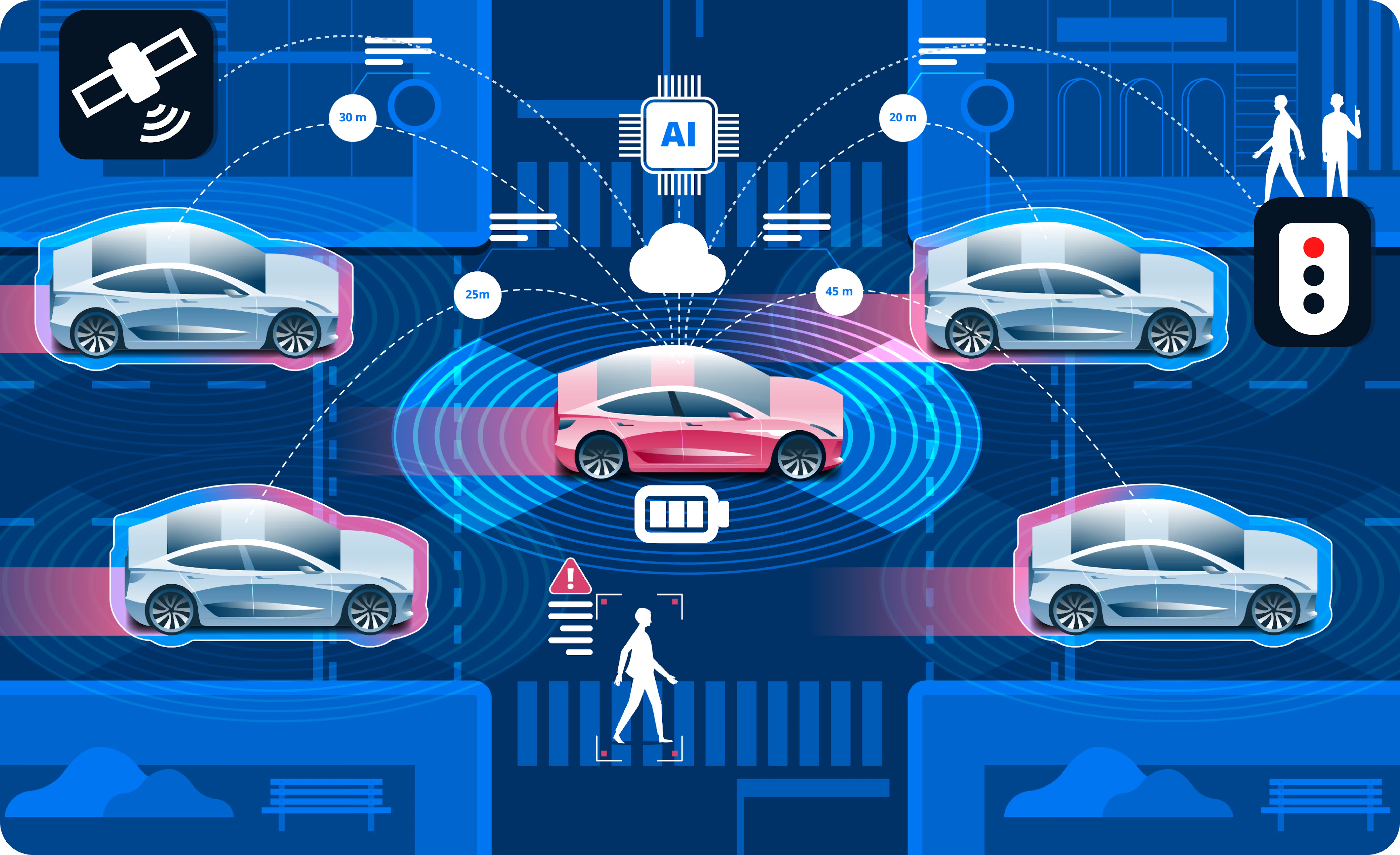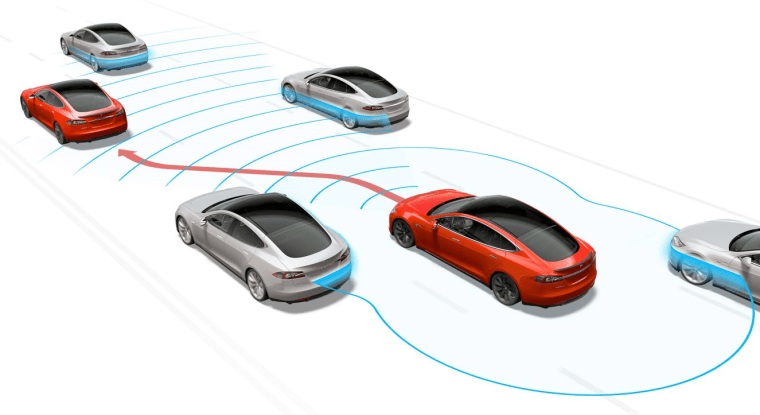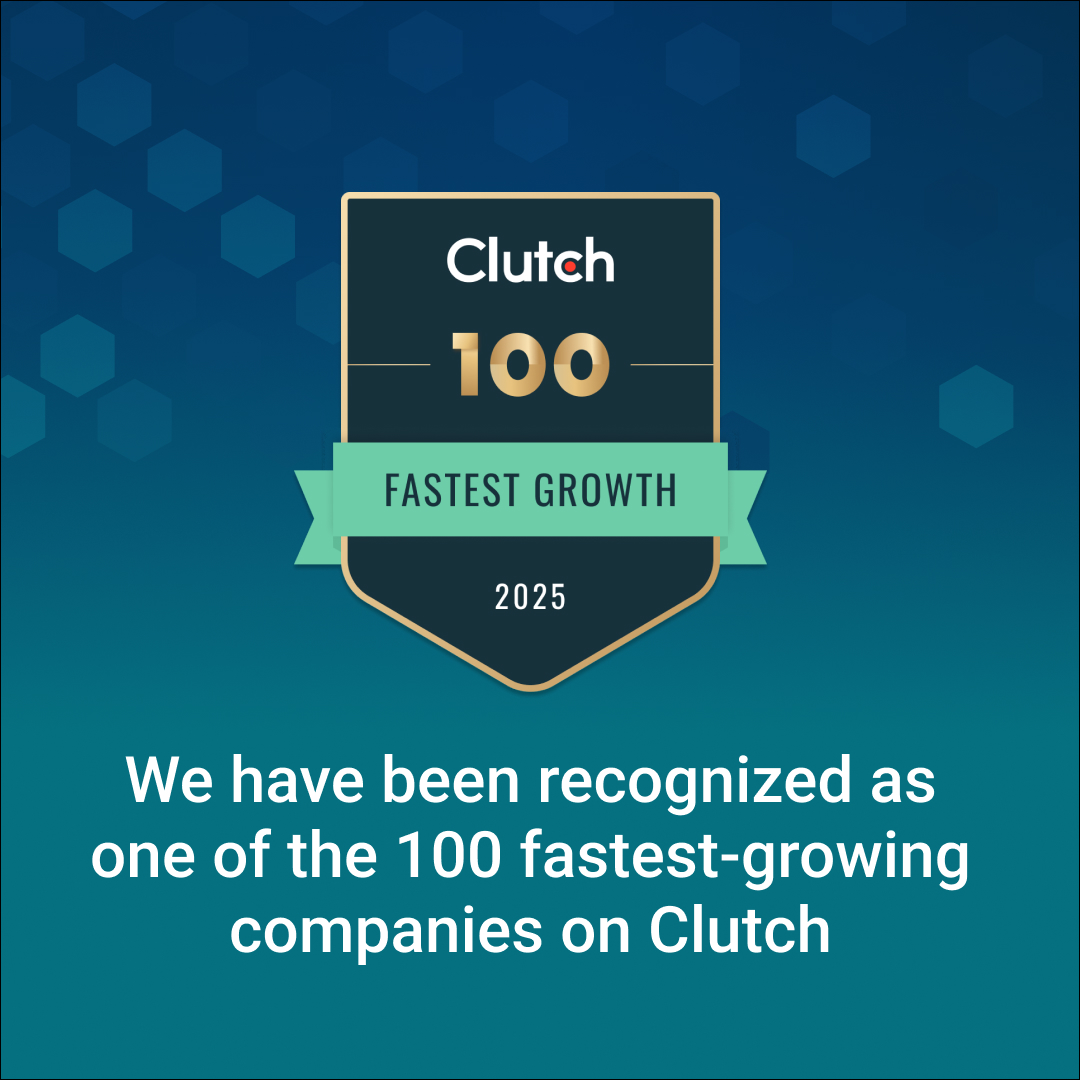Welcome to the era where machines don’t just collect data—they think, learn, and act! The fusion of Artificial Intelligence (AI) and the Internet of Things (IoT) is one of the most electrifying advancements shaping the future. This convergence, often called AIoT (Artificial Intelligence of Things), is pushing the boundaries of automation, efficiency, and intelligence like never before.
Imagine cities that optimize their own traffic flow, factories that predict and prevent breakdowns before they happen, and smart homes that anticipate your needs before you even realize them. This isn’t science fiction—it’s happening right now.
AI and IoT: A Quick Rundown

AI is the brain behind smart technology. It enables machines to analyze, predict, and make decisions, mimicking human intelligence but at a scale and speed that we could never achieve on our own. From machine learning to natural language processing, AI is the driving force behind everything from self-driving cars to advanced chatbots.
On the other hand, IoT is the nervous system of the digital world – billions of connected devices, sensors, and systems continuously gathering and transmitting real-time data. Think of smart thermostats adjusting temperature, wearables tracking health metrics, and massive industrial networks ensuring seamless production.
But data alone isn’t enough. That’s where AI steps in, transforming raw information into powerful, real-time insights and automated actions.
Why the AI + IoT Convergence is a Game Changer
The world is moving too fast for manual control. AI supercharges IoT, making devices not just connected—but intelligent, self-learning, and responsive.
This means:
- Smarter Automation – Machines anticipate and solve problems before they escalate.
- Faster Decisions – Real-time data analysis leads to instant, precise actions.
- Personalized Experiences – Devices adapt to users, making interactions seamless.
From healthcare to manufacturing, transportation to finance – AIoT is revolutionizing industries and everyday life.
Buckle up—because the AIoT era is just getting started!
1. Understanding the Fundamentals
In this section, we’ll break down the fundamentals of IoT and AI, explore their core components, and uncover the latest trends shaping their evolution. By the end, you’ll have a solid foundation to understand their real-world impact and future potential.
Let’s dive in!
Internet of Things (IoT)
The Internet of Things (IoT) refers to a network of physical objects – “things” – embedded with sensors, software, and other technologies that enable these devices to connect and exchange data over the internet. These objects range from everyday household items to sophisticated industrial machinery.
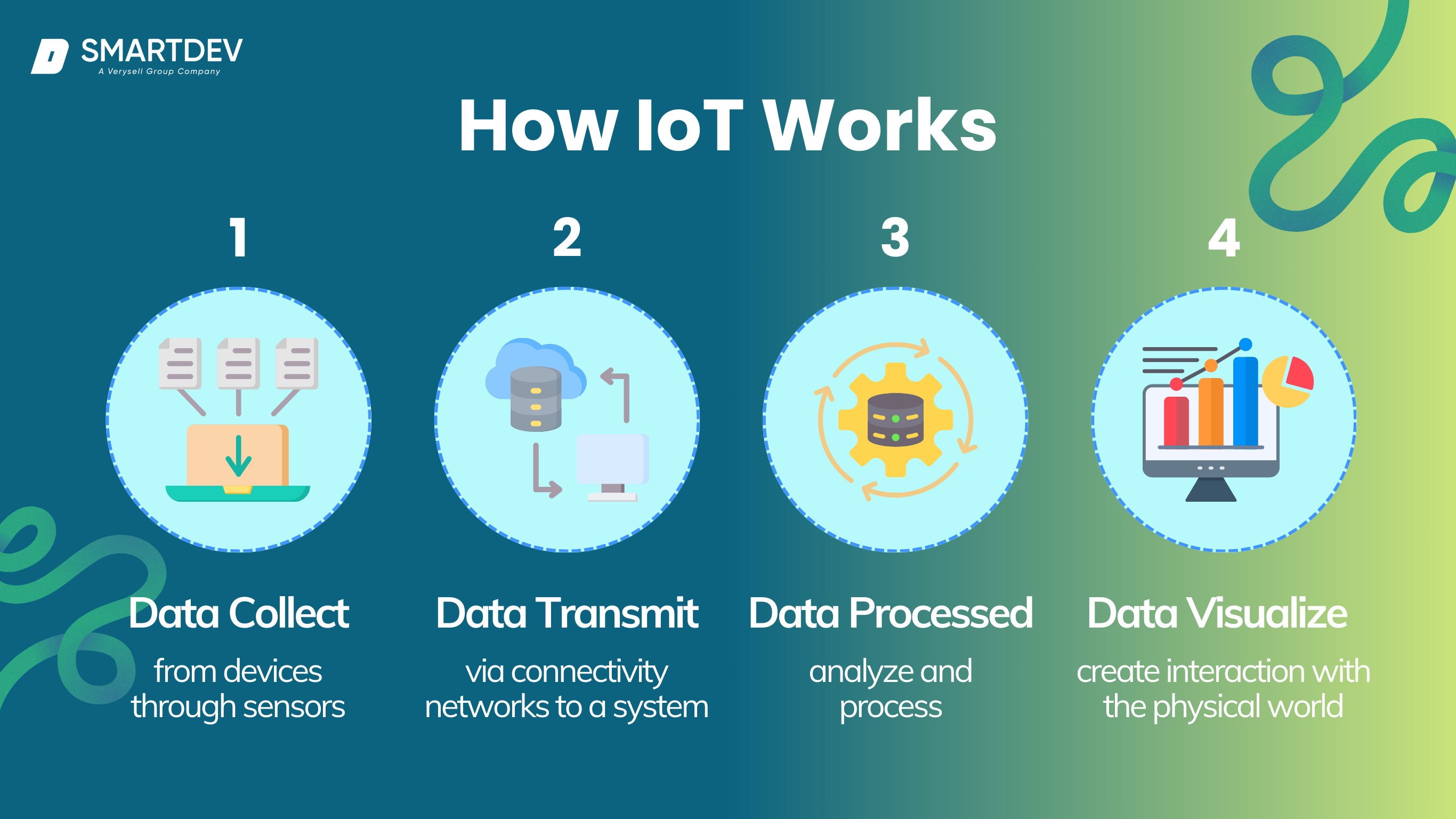
You may wonder how it works? IoT operates by collecting data from devices through sensors, transmitting this data via connectivity networks to centralized systems (often cloud-based), where the data is processed and analyzed. The resulting insights can trigger actions, either automatically or through user intervention, creating a seamless interaction between the physical and digital worlds.
IoT adoption is skyrocketing, with over 17 billion connected devices in 2024, projected to exceed 30 billion by 2025. Industrial IoT (IIoT) is leading the charge, optimizing supply chains and predictive maintenance in manufacturing. Smart cities are expanding their IoT networks to enhance energy efficiency, reduce traffic congestion, and improve public safety.
Meanwhile, 5G connectivity is supercharging IoT applications by enabling real-time data transmission with ultra-low latency, making advancements like autonomous vehicles and remote robotic surgery more feasible. Additionally, cybersecurity in IoT remains a top priority, with increased investment in AI-driven security solutions to prevent hacking and data breaches.
Artificial Intelligence (AI)
Artificial Intelligence (AI) refers to intelligent systems capable of analyzing data, learning from patterns, and making decisions without explicit human intervention.
AI is broadly classified into Narrow AI (Weak AI), which performs specific tasks (e.g., chatbots, recommendation engines), and General AI (Strong AI), which theoretically possesses human-like reasoning and decision-making capabilities.
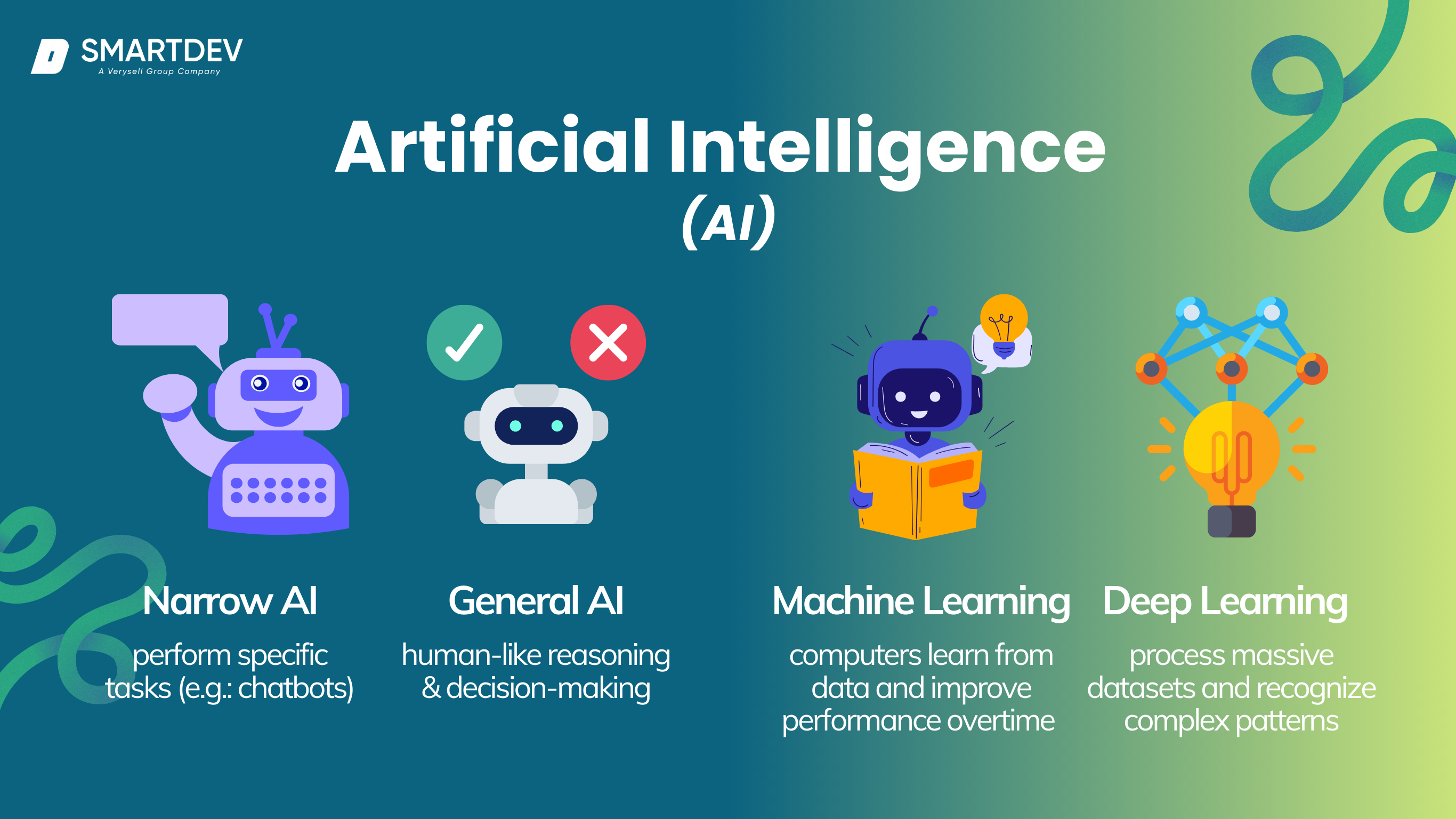
In addition, Machine Learning (ML) is a subset of AI that enables computers to learn from data and improve performance over time without being explicitly programmed.
Deep Learning (DL), a more advanced form of ML, leverages multi-layered neural networks to process massive datasets and recognize complex patterns. DL is the backbone of cutting-edge innovations like facial recognition, speech synthesis, and AI-generated content.
Artificial Intelligence (AI) is advancing at an unprecedented pace, reshaping industries and redefining competition. A notable example is DeepSeek, a Chinese AI company that has developed innovative models minimizing human intervention, significantly reducing costs and time-to-market. Their recent release, the DeepSeek-R1 model, has garnered attention for its efficiency and performance, rivaling existing models in complex problem-solving tasks. In fundamental science, AI is playing a critical role in particle physics research, helping scientists explore cosmic mysteries and even predict the potential fate of the universe.
Meanwhile, AI-driven technological disruption is altering corporate landscapes, with analysts predicting that today’s leading tech giants may be replaced by AI-native firms that dominate the next era of computing. These rapid advancements have also fueled global discussions on AI regulation, ethics, and the risks of unregulated autonomous systems.
2. The Convergence of AI and IoT
The convergence of Artificial Intelligence (AI) and the Internet of Things (IoT), known as the Artificial Intelligence of Things (AIoT), is revolutionizing the technological landscape. By integrating AI’s data-processing capabilities with IoT’s connectivity and data-collecting functions, AIoT creates intelligent systems capable of autonomous decision-making and enhanced analytics.
How AI Enhances IoT Capabilities
AI significantly amplifies IoT functionalities by enabling devices to analyze data locally, make informed decisions in real-time, and learn from patterns to improve performance. This integration leads to more efficient operations, predictive maintenance, and personalized user experiences.
For instance, in smart homes, AI algorithms analyze data from IoT sensors to optimize energy consumption and enhance security protocols.
Success Example in Auto Vehicles
One of the most successful and transformative examples of the convergence of Artificial Intelligence (AI) and the Internet of Things (IoT) is the development of autonomous vehicles. These self-driving cars utilize AI to process data from various sensors, allowing them to navigate and make driving decisions without human intervention.
Autonomous vehicles are equipped with an array of IoT devices, including cameras, radar, lidar, and ultrasonic sensors, which continuously collect data about the vehicle’s surroundings. AI algorithms analyze this data in real-time to identify objects, predict their movements, and make decisions such as when to turn, accelerate, or brake. This integration enhances safety, reduces human error, and has the potential to revolutionize transportation by improving traffic flow and reducing accidents.
Companies like Tesla, Waymo, and Uber have been at the forefront of developing and deploying autonomous vehicles, conducting extensive testing and, in some cases, offering limited public services. The success of these vehicles demonstrates the profound impact that the fusion of AI and IoT can have, paving the way for smarter, more efficient, and safer transportation systems.
Beyond self-driving cars, autonomous drones are another groundbreaking innovation powered by AI and IoT. These drones leverage similar sensor-based technologies and machine learning algorithms to navigate complex environments, making them invaluable for applications ranging from delivery services to search and rescue operations. Learn more about how AI is transforming autonomous drones.
3. Benefits of Integrating AI with IoT
The fusion of Artificial Intelligence (AI) and the Internet of Things (IoT) is unlocking transformative benefits across industries, from manufacturing and healthcare to energy and smart cities. These benefits can be grouped into five key categories:
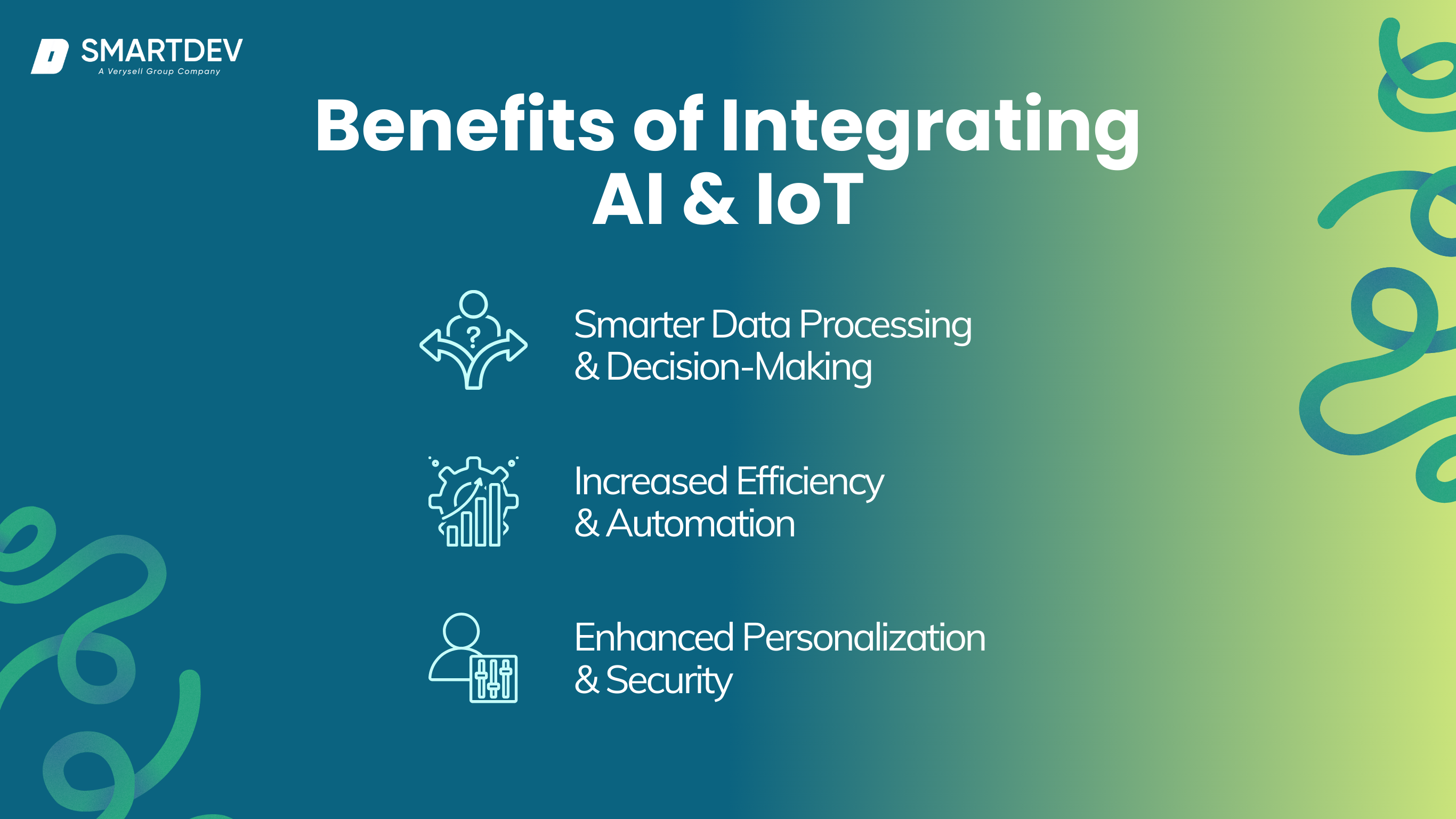
Smarter Data Processing and Decision-Making
🔹 Data Processing and Analysis – AI-driven IoT systems can process vast amounts of data, filtering out noise and extracting valuable insights for better decision-making.
🔹 Real-time Decision Making – AI enables IoT devices to analyze and act on data instantaneously, which is critical for applications like autonomous vehicles, smart traffic systems, and industrial automation.
🔹 Advanced Analytics and Insights – AI enhances IoT by identifying hidden patterns, forecasting trends, and making data-driven predictions that would be impossible with traditional methods.
Increased Efficiency and Automation
🔹 Efficiency and Automation – AI-powered IoT devices optimize operations, reduce manual intervention, and improve overall productivity in industries like manufacturing and logistics.
🔹 Predictive Maintenance – AI analyzes IoT sensor data to detect potential failures before they happen, reducing downtime and maintenance costs in factories, power plants, and even aircraft.
🔹 Energy Efficiency – AI optimizes energy consumption in IoT-connected devices, helping industries and smart homes reduce waste and lower costs.
Enhanced Personalization and Security
🔹 Personalization and User Experience – AI uses IoT data to create tailored experiences, from smart home automation (adjusting lighting, temperature) to healthcare (personalized treatment plans).
🔹 Security and Privacy – AI strengthens IoT security by identifying and preventing cyber threats, such as unauthorized access and data breaches, in real time.
Transformative Industrial Applications
🔹 Smart Factories and Industry 4.0 – AIoT enables self-optimizing manufacturing processes, where machines detect inefficiencies and adjust production automatically.
🔹 Inventory Management – AI-powered IoT systems track supply chain movements in real time, reducing waste and preventing shortages.
Healthcare & Medical Devices
🔹 Remote Monitoring and Telemedicine – IoT devices equipped with AI analyze patient vitals and alert doctors to early warning signs, improving proactive healthcare.
🔹 Personalized Treatment Plans – AI processes patient data from IoT-enabled wearables to tailor medications and treatments for individual needs.
Smart Cities, Agriculture & Energy Innovations
🔹 Traffic Management – AIoT optimizes traffic flow by analyzing vehicle and pedestrian data, reducing congestion and emissions.
🔹 Public Safety – AI-powered surveillance and IoT sensors enhance security by detecting suspicious activities and sending real-time alerts.
Agriculture & Environmental Monitoring
🔹 Precision Farming – AIoT automates irrigation, fertilization, and pest control by analyzing real-time soil and weather conditions.
🔹 Climate Monitoring – AI-driven sensors track environmental changes, helping governments and businesses respond to climate challenges.
Energy Sector
🔹 Smart Grids – AI optimizes power distribution in IoT-enabled energy grids, balancing supply and demand for greater efficiency.
🔹 Renewable Energy Management – AIoT predicts energy generation patterns from wind and solar farms, ensuring stability and reducing reliance on fossil fuels.
The integration of AI with IoT is not just an upgrade—it’s a revolution. The sheer abundance of benefits spans efficiency, automation, security, personalization, and sustainability, touching nearly every industry imaginable.
From self-optimizing factories and life-saving healthcare innovations to intelligent cities and climate-conscious energy management, AIoT is reshaping the way we live, work, and interact with the world. The possibilities are limitless, and as AI and IoT continue to evolve, the impact will only grow, making this convergence one of the most transformative technological advancements of our time.
4. Challenges in AIoT Implementation
While AIoT offers immense potential, its adoption comes with significant challenges that businesses and industries must navigate.
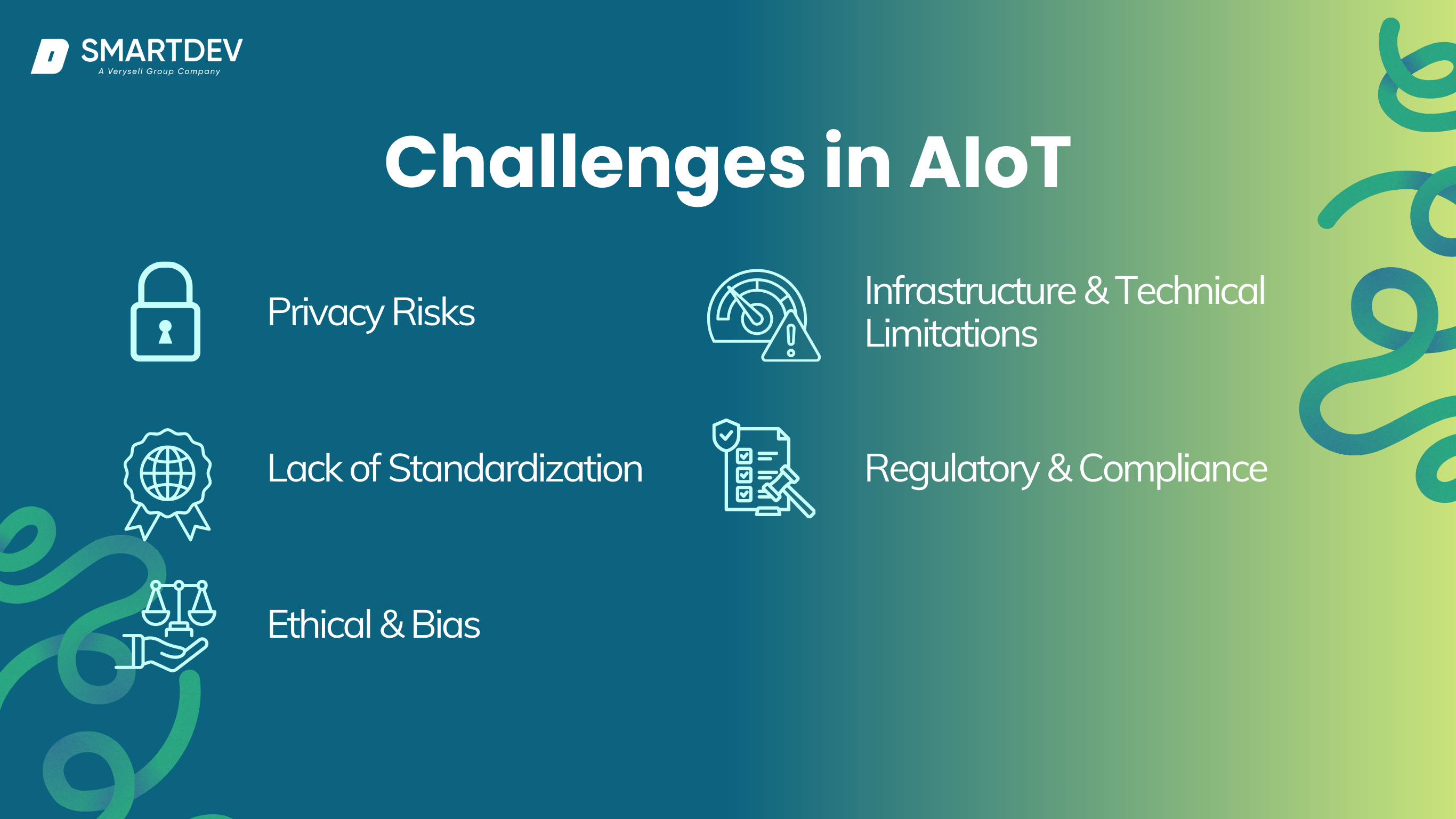
Security & Privacy Risks
With billions of connected devices exchanging vast amounts of data, cybersecurity threats and data breaches are major concerns. In 2023, a major smart home device manufacturer was hacked, exposing users’ private video footage, raising alarms about AIoT security vulnerabilities. Protecting sensitive data with encryption and strong authentication measures is critical.
Lack of Standardization
AIoT devices often operate on different protocols and platforms, making seamless integration difficult. For example, many industrial IoT systems struggle to connect different brands of sensors and AI-powered analytics platforms, leading to inefficiencies and security gaps. Establishing universal interoperability standards is essential for smooth AIoT deployment.
Ethical & Bias Issues
AI algorithms used in AIoT systems can inherit biases from training data, leading to unfair outcomes or discrimination in decision-making processes. AI-driven facial recognition cameras in smart cities have been criticized for racial bias, misidentifying individuals and raising concerns about surveillance ethics. Transparent AI governance and diverse datasets are needed to prevent biased decision-making.
Infrastructure & Technical Limitations
AIoT requires robust network infrastructure, high-speed connectivity, and advanced computing power to process massive real-time data streams. In rural areas, the lack of reliable 5G and edge computing infrastructure makes real-time AI analysis nearly impossible, limiting smart agriculture innovations. Expanding connectivity and cloud-edge hybrid computing can mitigate these limitations.
Regulatory & Compliance Barriers
AIoT operates in heavily regulated industries like healthcare, finance, and energy, where compliance with data protection laws (e.g., GDPR, CCPA) is mandatory. In the healthcare sector, AI-powered IoT wearables have faced regulatory pushback in Europe due to concerns over patient data privacy, delaying market entry. Companies must navigate evolving legal frameworks to ensure ethical AIoT deployment.
5. Future Prospects of AIoT
The Artificial Intelligence of Things (AIoT) is rapidly transforming various sectors, driven by advancements in edge computing and the deployment of 5G networks. These technologies enable devices to process data locally, reducing latency and facilitating real-time decision-making, which is crucial for applications like autonomous vehicles and industrial automation.
The AIoT market is experiencing significant growth. According to MarketsandMarkets, it is projected to expand from $18.37 billion in 2024 to $79.13 billion by 2030, reflecting a CAGR of 27.6%. This surge is attributed to the increasing demand for automation and enhanced operational efficiency across industries.
In healthcare, AIoT enables remote patient monitoring and personalized treatment plans, improving patient outcomes and reducing hospital readmissions. The manufacturing sector benefits from predictive maintenance and optimized production processes, leading to increased efficiency and reduced operational costs. In agriculture, AIoT facilitates precision farming through real-time monitoring of soil conditions and crop health, enhancing yield and resource management.
As AIoT continues to evolve, it is expected to drive further innovations and efficiencies across various industries, solidifying its role as a cornerstone of modern technological advancement.
6. Understanding Key Concepts
By now, it’s clear that AI and IoT are powerful on their own—but together, they create AIoT, a game-changing fusion that enables smarter automation, predictive insights, and real-time decision-making. Let’s quickly break down the key concepts:
AI vs. IoT: What’s the Difference?
IoT focuses on collecting and transmitting data from connected devices, while AI is all about analyzing that data, learning from it, and making decisions without human intervention.
How They Work Together
AI processes the vast amounts of data that IoT devices generate, turning it into meaningful actions and insights—whether it’s self-optimizing smart factories, AI-powered healthcare wearables, or predictive maintenance in industries.
Full Forms & Terminologies to Remember
- AI (Artificial Intelligence) – Machines that can learn, reason, and make decisions.
- IoT (Internet of Things) – A network of connected devices that collect and share data.
- AIoT (Artificial Intelligence of Things) – The integration of AI with IoT to create intelligent, automated systems.
In essence, AI makes IoT smarter, and IoT gives AI the real-world data it needs to learn and evolve. Together, they’re revolutionizing industries and everyday life. As AIoT continues to grow, it’s shaping the future of automation, efficiency, and intelligence across the globe. 🚀
7. Success Stories
AIoT is reshaping industries with groundbreaking applications, and one of the most high-profile success stories is Tesla’s Autopilot system. Tesla has successfully integrated AI-powered computer vision, deep learning models, and real-time IoT sensor data to create one of the most advanced self-driving technologies available today.
The system collects massive amounts of data from sensors like cameras, radar, and ultrasonic detectors, which AI then processes to predict traffic behavior, detect obstacles, and make split-second driving decisions. Tesla’s edge lies in its self-learning AI, where the fleet continuously improves as it gathers and analyzes more driving data worldwide.
The company’s ability to combine data-driven learning, real-time processing, and over-the-air updates has made Autopilot a leader in AIoT innovation, pushing the automotive industry toward full automation. Tesla’s success shows that AIoT thrives when AI models continuously learn from IoT-generated data and adapt in real time, improving safety and efficiency at scale.
SmartDev and ClariFruit
A more industry-specific case study comes from SmartDev’s collaboration with ClariFruit, an AIoT-powered fresh produce quality control solution. Traditional quality assessment in the agricultural sector was manual, slow, and prone to human error, making it inefficient for large-scale operations.
SmartDev helped ClariFruit integrate AI-driven image recognition with IoT sensors, allowing for real-time fruit quality analysis and automated grading processes. The system scans fruit using smartphone cameras, AI algorithms analyze the visual data, and IoT connectivity instantly syncs results to cloud-based dashboards. This reduced manual workload, improved consistency, and enabled large-scale automation in the fresh produce industry. The project’s success highlights how AIoT can eliminate inefficiencies, digitize traditional industries, and enhance precision-based decision-making.
Conclusion: The AIoT Revolution is Here
The fusion of AI and IoT is transforming industries, enabling real-time decision-making, automation, and predictive insights. From self-driving cars to AI-powered factories, AIoT is making systems smarter, more efficient, and more autonomous.
Challenges like security risks, ethical concerns, and infrastructure demands remain, but advancements in edge computing, 5G, and AI models are rapidly overcoming them. Companies that adopt AIoT now will shape the future, unlocking unprecedented innovation and efficiency.
AIoT isn’t just a trend—it’s the backbone of a smarter, self-learning world. As technology evolves, machines won’t just connect—they’ll think, learn, and act. The revolution has begun—are you ready?

